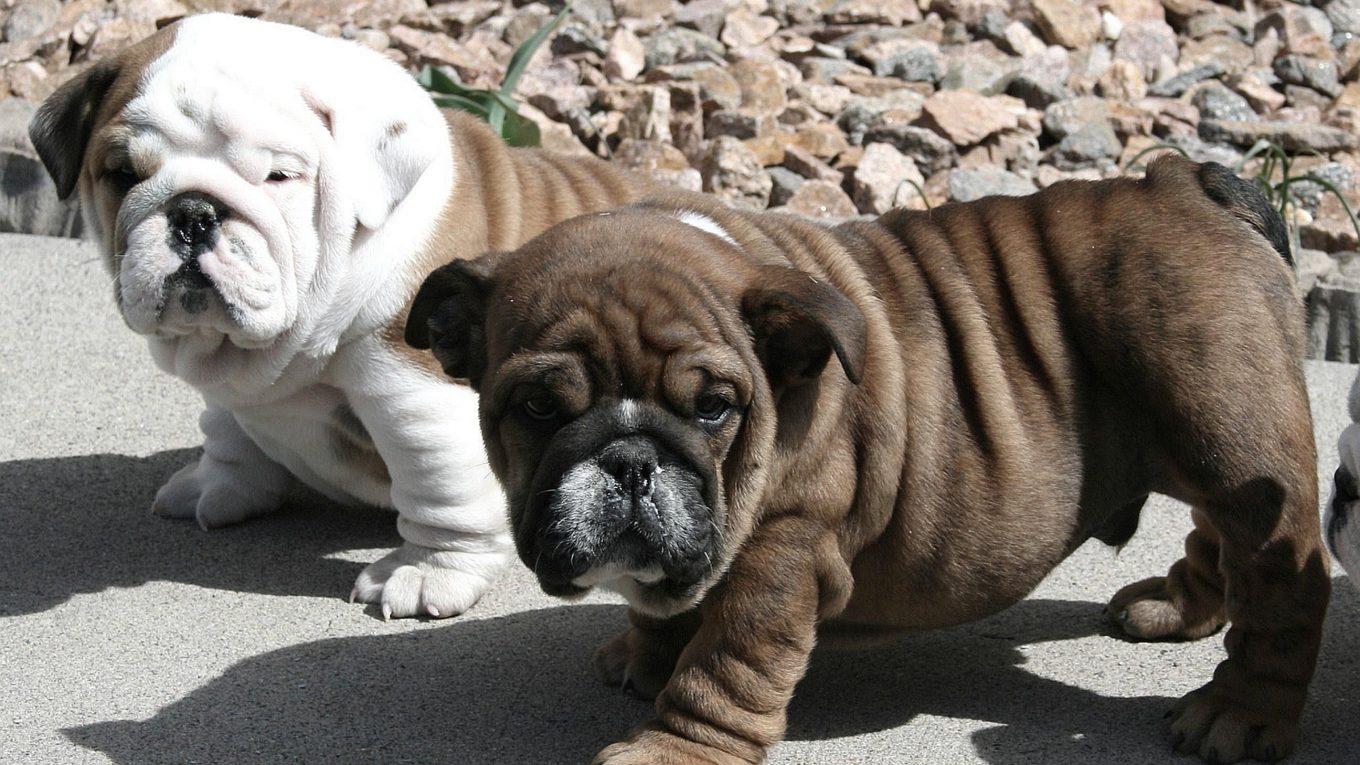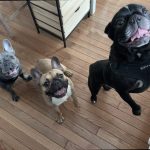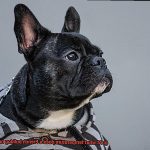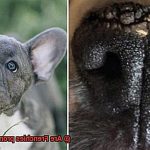Are pugs related to Bulldogs?
Step into the enchanting world of pugs and bulldogs.
Contents
Ever pondered the ties that bind these two irresistible dog breeds? Well, you’ve stumbled upon the perfect spot to satisfy your curiosity.
Prepare to be amazed as we uncover not only their adorably squished faces but also their genetic roots. Believe it or not, pugs and bulldogs can trace their lineage back to a common ancestor – an ancient beast known as the Molossus dog.
Picture a hulking creature, brimming with strength and used for guarding and battling. Through centuries of meticulous breeding, we arrive at the distinct traits that define these pooches today.
The answer lies in their shared past, and in this blog post, we’ll embark on a thrilling journey through time to unravel the captivating connections between these lovable wrinkled companions.
Physical Similarities between Pugs and Bulldogs
If you’ve ever wondered about the physical similarities between your beloved Frenchie and their pug counterparts, you’re in the right place. As an expert in dog breeds, I’m here to shed some light on the shared physical traits that make these two breeds so adorable and distinct. So, let’s dive right in.
Brachycephalic Beauty:
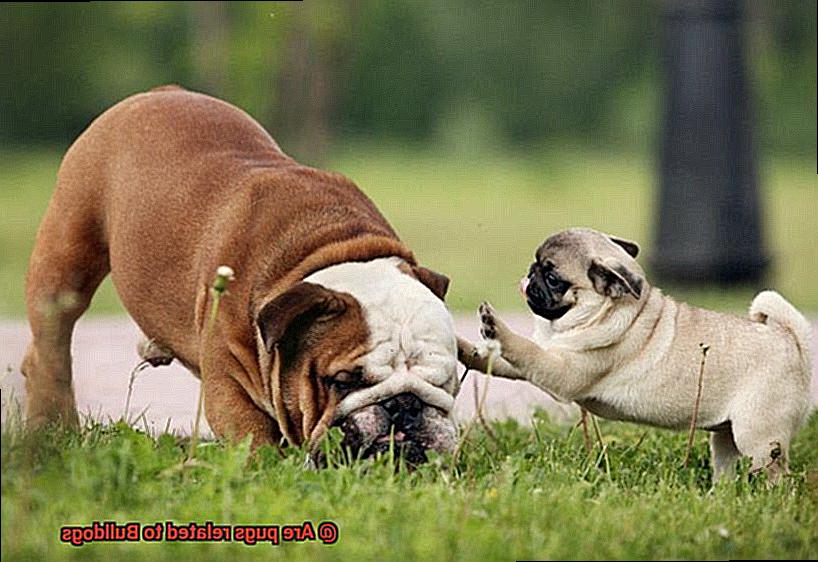
One look at a pug or a Bulldog, and you’ll notice their most striking similarity: their brachycephalic features. These breeds have short muzzles and flat faces, giving them that unique and endearing look that melts our hearts.
The Perfect Heads:
Both pugs and Bulldogs boast skull structures that are round and distinctive. Their foreheads stand out proudly, and they have wide-set eyes that are large and oh-so-expressive. You simply can’t resist those adorable puppy eyes.
Compact and Mighty:
When it comes to body structure, pugs and Bulldogs are equally impressive. They have compact, muscular bodies with a low-slung appearance that exudes strength and sturdiness. They’re like little powerhouses.
Smooth Coats Galore:
Another physical similarity shared by pugs and Bulldogs is their short, smooth coats. This makes them low-maintenance in terms of grooming, which is always a plus for busy pet parents. Plus, their coat colors can range from fawn to black, silver, or even brindle patterns.
Curly Tails:
Have you ever noticed those cute screw-shaped or curly tails on pugs and Bulldogs? Well, that’s another feature they have in common. These unique tail shapes sit high on their backs, adding to their charm.
Size Matters:
In terms of size, both breeds fall into the small to medium-sized category. Pugs typically weigh between 14 to 18 pounds, while Bulldogs can range from 40 to 50 pounds. So, whether you prefer a compact companion or a slightly bigger buddy, both breeds have got you covered.
Big Heads, Big Hearts:
Pugs and Bulldogs have relatively large heads compared to their bodies. This is due to their brachycephalic nature, which can sometimes lead to respiratory issues. However, it doesn’t stop them from being affectionate, playful, and all-around good-natured dogs that will steal your heart in an instant.
Wrinkles of Love:
Lastly, both pugs and Bulldogs sport those adorable wrinkles on their faces, especially around the forehead and muzzle area. While these wrinkles add to their cute factor, they require regular cleaning and maintenance to keep them healthy and free from irritations.
History of the Pug Breed
These lovable little dogs have a rich and intriguing past that stretches back over 2,000 years to ancient China. Let’s dive into the captivating journey of the Pug breed.
Origins in Ancient China
The story begins in ancient China, where Pugs were originally bred as companion dogs for Chinese royalty. These adorable canines quickly won the hearts of the royal family with their loyalty and affectionate nature. While the exact origins of the Pug are unclear, experts believe that they descended from small, short-faced dogs known as “lo-sze.”
European Popularity
In the 16th century, Dutch traders brought Pugs to Europe, where they quickly gained popularity among European nobility. It wasn’t long before these charming little dogs found themselves in the courts of Europe’s royal families.
The breed’s popularity soared even higher thanks to the influence of Queen Victoria of England in the 19th century. Queen Victoria adored Pugs and played a significant role in popularizing them among the upper class.
Royal Depictions
Pugs became a favorite subject for painters and artists during this period. They were often depicted in paintings and tapestries alongside their noble owners, showcasing their regal status. These artistic depictions helped solidify the image of the Pug as a companion fit for royalty.
Ups and Downs
Unfortunately, like many dog breeds, Pugs faced a decline in popularity during the World Wars. The hardships of war led to a decrease in breeding, and many Pugs were lost or abandoned. However, thanks to dedicated breeders and enthusiasts, the Pug saw a resurgence in the mid-20th century.
Today’s Popularity
Fast forward to today, and Pugs are recognized as a popular companion dog breed worldwide. Their distinctive appearance, with a wrinkled face, curly tail, and compact body, makes them instantly recognizable. Pugs continue to capture hearts with their playful and affectionate personalities.
History of the Bulldog Breed
Today, we embark on a fascinating journey into the captivating history of the Bulldog breed. From their origins as formidable fighters to their evolution into cherished companion animals, get ready to uncover the stories behind these lovable wrinkled-faced canines.
Origins of the Bulldog Breed:
The Bulldog breed traces its ancestry back to ancient mastiff-type dogs that were utilized for various purposes, including guarding and hunting. These courageous canines found their place in medieval England as participants in the popular sport of bull-baiting. Brave and unyielding, Bulldogs were specifically bred for their tenacity, strength, and muscular build.
The Evolution from Fighters to Friends:
In the 19th century, bull-baiting was banned in England, leading to the decline of the Bulldog breed. However, rather than fading away, Bulldogs adapted and found new roles as loyal companions. Breeders shifted their focus from fighting abilities to temperament and appearance, forging the path towards creating the gentle and friendly Bulldogs we adore today.
Refinement and Recognition:
As Bulldogs transitioned from brawlers to buddies, further refinements were made to improve their temperament and adaptability as family pets. Aggression was selectively bred out, making way for their renowned friendly and gentle nature. In 1873, the Bulldog breed received official recognition from the prestigious Kennel Club in England, solidifying its place as a beloved canine companion worldwide.
Distinctive Physical Traits:
The unique appearance of Bulldogs is a result of purposeful selective breeding over time. Their broad shoulders, large head, pushed-in nose, and wrinkled face have become hallmarks of the breed’s identity. These distinct features not only add charm but also serve as a testament to the Bulldog’s resilient history.
Bulldogs’ Influence on Other Breeds:
The Bulldog breed’s impact extends beyond its own existence. Bulldogs played a significant role in the development of other breeds, including the adorable Pug. Through selective breeding and common ancestry, Pugs share physical characteristics, such as pushed-in noses and wrinkled faces, with Bulldogs. Although distinct breeds, their intertwined history is evident.
As we conclude our journey through time, we marvel at the incredible transformation of Bulldogs from fierce fighters to cherished companions. Their rich history and unique traits have made them an enduring favorite among dog lovers worldwide.
So next time you gaze into your French Bulldog’s adorable face, remember the fascinating journey of the Bulldog breed and cherish the legacy they carry with them today.
Selective Breeding Practices of Pugs and Bulldogs
Prepare to be amazed as we delve into the world of selective breeding practices that have shaped the physical characteristics of our beloved pugs and bulldogs. In this article, we will explore the origins of these brachycephalic breeds, their transition from working dogs to cherished companions, and the health concerns associated with their distinctive features. So sit back, relax, and prepare to be enlightened.
A Nose Above the Rest: Selective Breeding in Pugs and Bulldogs
- Brachycephalic breeds defined
- Ancient origins of pugs and bulldogs
- Purposeful selection for specific traits
- Desired characteristics: stocky build, pushed-in nose
From Battlefields to Living Rooms: Shifting Roles of Pugs and Bulldogs
- Pugs as companions for Chinese emperors
- Bulldogs in bull-baiting sport
- Transition to domesticated roles as household pets
- Focus on friendly temperament and adaptability
The Price of Distinction: Health Issues in Pugs and Bulldogs
- Respiratory problems due to shortened skull and flat face
- Eye ulcers and dental issues
- Difficulty regulating body temperature
- Obesity as a common concern
Advocating for Responsible Breeding Practices
- Growing concern about health consequences
- Animal welfare organizations and veterinarians take action
- Health screening programs and responsible breeding initiatives
- Encouraging breeders to prioritize overall breed health
Choosing Wisely: Owning a Pug or Bulldog Responsibly
- Awareness of potential health issues
- Selecting responsible breeders who prioritize well-being
- Regular exercise and portion control to combat obesity
- Importance of routine veterinary care
As we conclude our journey through the fascinating world of pugs and bulldogs, it is essential to emphasize the need for responsible breeding practices and conscientious ownership. While their distinctive physical characteristics have made them beloved pets, it is crucial to prioritize the health and well-being of these breeds. By doing so, we can ensure that future generations of pugs and bulldogs continue to bring joy and companionship to our lives.
Remember, the bond we share with our furry friends extends beyond physical appearance. Let us celebrate their endearing personalities and loving nature while also safeguarding their health for years to come.
Differences in Temperament between Pugs and Bulldogs
Now, let’s dive into the delightful differences in temperament between pugs and bulldogs. These two breeds may share some similarities, but when it comes to personality, they have their own unique quirks that set them apart.
- Sociability: Pugs are social butterflies, my friends. They love making new pals, whether they’re four-legged or two-legged. Pugs are known for their friendly and outgoing nature, making them a hit at social gatherings. Bulldogs, on the other hand, are more laid-back and calm. They enjoy a quieter lifestyle and may not be as eager to make new friends as their pug counterparts.
- Energy Level: If you’re looking for a running buddy, the pug might not be your first choice. These little munchkins have bursts of energy but tend to be on the lower end of the energy spectrum. Bulldogs, however, take the cake for being the chill masters. They’re content with shorter walks and lazy afternoons on the couch.
- Independence: Pugs can be quite independent-minded, my friends. They have a streak of stubbornness that can make training a bit challenging at times. Bulldogs, on the other hand, are eager to please their owners and are generally easier to train. It’s like comparing a free-spirited artist to an obedient student.
- Protective Instincts: When it comes to guarding your castle, bulldogs take the prize. These loyal creatures have a natural instinct to protect their loved ones and property. Pugs, while they might alert you of strangers approaching, don’t possess the same level of protective instincts as their bulldog buddies.
- Affectionate Gestures: Pugs are like velcro dogs – they’ll stick to you like glue. These little lovebugs crave attention and physical affection. Bulldogs, on the other hand, might express their love through gentle nuzzling or leaning against you. It’s like comparing a clingy cuddler to a gentle leaner.
Remember, my friends, temperament can vary within individual dogs, regardless of their breed. Each dog is unique with their own personality traits and quirks. So, spend some quality time getting to know your furry friend to truly understand their temperament.
Health Concerns for Pugs
Pugs are adorable and lovable companions, but as a pug owner, it’s important to be aware of the potential health concerns that can affect this breed. In this article, we will discuss some of the common health issues that pug owners should be mindful of.
- Brachycephalic Syndrome: Pugs have a unique physical characteristic – a short muzzle. While this trait adds to their cuteness, it can also lead to breathing difficulties. Brachycephalic syndrome can cause snoring, wheezing, and difficulty breathing, especially in hot or humid weather. It’s important to keep your pug in a cool and well-ventilated environment and avoid strenuous exercise in extreme temperatures.
- Eye Problems: Pugs’ large, bulging eyes are prone to various eye conditions such as corneal ulcers, dry eye, and cherry eye. Regular eye exams by a veterinarian are essential to detect and manage these issues early on. Additionally, proper eye care, including regular cleaning and lubricating eye drops if recommended by your vet, can help prevent complications.
- Obesity: Pugs have a reputation for being food lovers, and combined with their sedentary lifestyle, they are prone to obesity. Maintaining a healthy weight is crucial for their overall well-being and can help prevent other health problems such as joint issues and heart disease. Provide a balanced diet and regular exercise for your pug to keep them fit and healthy.
- Skin Problems: Pugs’ adorable wrinkles and folds may be charming, but they can also trap moisture and bacteria, leading to skin infections and irritations. Regular cleaning and drying of these areas are necessary to prevent such problems. Using dog-safe wipes or a damp cloth can help keep the folds clean.
- Genetic Conditions: Pugs are susceptible to certain genetic conditions such as hip dysplasia and patellar luxation. These conditions affect the joints and can cause discomfort and mobility issues. Regular veterinary check-ups and early detection are crucial for managing these conditions effectively.
- Temperature Sensitivity: Pugs have a short coat that provides little insulation against cold weather, and their brachycephalic features make it difficult for them to cool down in hot weather. As a pug owner, it’s important to take precautions in extreme temperatures to ensure your pug’s comfort and safety. Provide them with warm clothing in winter and avoid taking them out during the hottest parts of the day in summer.
Health Concerns for Bulldogs
French Bulldogs are beloved for their unique appearance and adorable personalities. However, their distinctive physical characteristics also make them prone to certain health concerns. As a responsible owner, it’s crucial to be aware of these potential issues and take proactive measures to keep your French Bulldog in optimal health. In this blog post, we will discuss some of the common health concerns for Bulldogs, with a focus on French Bulldogs, and provide tips on how to address and prevent them.
Brachycephalic Airway Syndrome:
Due to their short noses and flat faces, Bulldogs are at risk for brachycephalic airway syndrome. This condition can cause breathing difficulties, snoring, overheating, and even sleep apnea. Ensure your French Bulldog has access to cool areas and fresh water, especially during hot weather. Regular exercise is essential for maintaining a healthy weight, but be mindful not to overexert them.
Skin Problems:
The adorable wrinkles and folds on a Bulldog’s face may be cute, but they can also create a breeding ground for bacteria and yeast. Regular cleaning and grooming are crucial to prevent skin infections. Use a gentle cleanser recommended by your veterinarian and ensure the folds are thoroughly dried after bathing.
Allergies:
French Bulldogs are prone to allergies, which can manifest as skin irritations, itching, and excessive scratching. Identify any potential allergens such as certain foods or environmental triggers and work with your veterinarian to develop an appropriate diet or allergy management plan.
Eye Problems:
Bulldogs are predisposed to various eye conditions, including cherry eye (prolapse of the gland of the third eyelid), entropion (inward rolling of the eyelids), and dry eye. Regular eye examinations by a veterinarian can help detect these issues early on and allow for prompt treatment.
Joint Problems:
Joint problems like hip dysplasia and patellar luxation can cause pain and mobility issues for Bulldogs. Maintaining a healthy weight through portion control and regular exercise is crucial to reduce the risk of these conditions. Ensure your French Bulldog’s diet includes essential nutrients for joint health, and consider supplements recommended by your veterinarian.
Obesity:
Bulldogs have low exercise requirements and a tendency to overeat, making them prone to obesity. Obesity can lead to various health issues, including heart disease, diabetes, and joint problems. Monitor your French Bulldog’s food intake, provide a balanced diet, and engage them in regular exercise suitable for their breed.
PmtZmLnUO8M” >
Conclusion
In conclusion, pugs and Bulldogs are indeed related.
Their shared ancestry can be traced back to the same root breed, the ancient Molossus. Over centuries of breeding and selection, these two adorable dog breeds have developed distinct characteristics that make them unique in their own right.
From their similar physical features to their playful and affectionate personalities, pugs and Bulldogs share a special bond that goes beyond mere resemblance.
